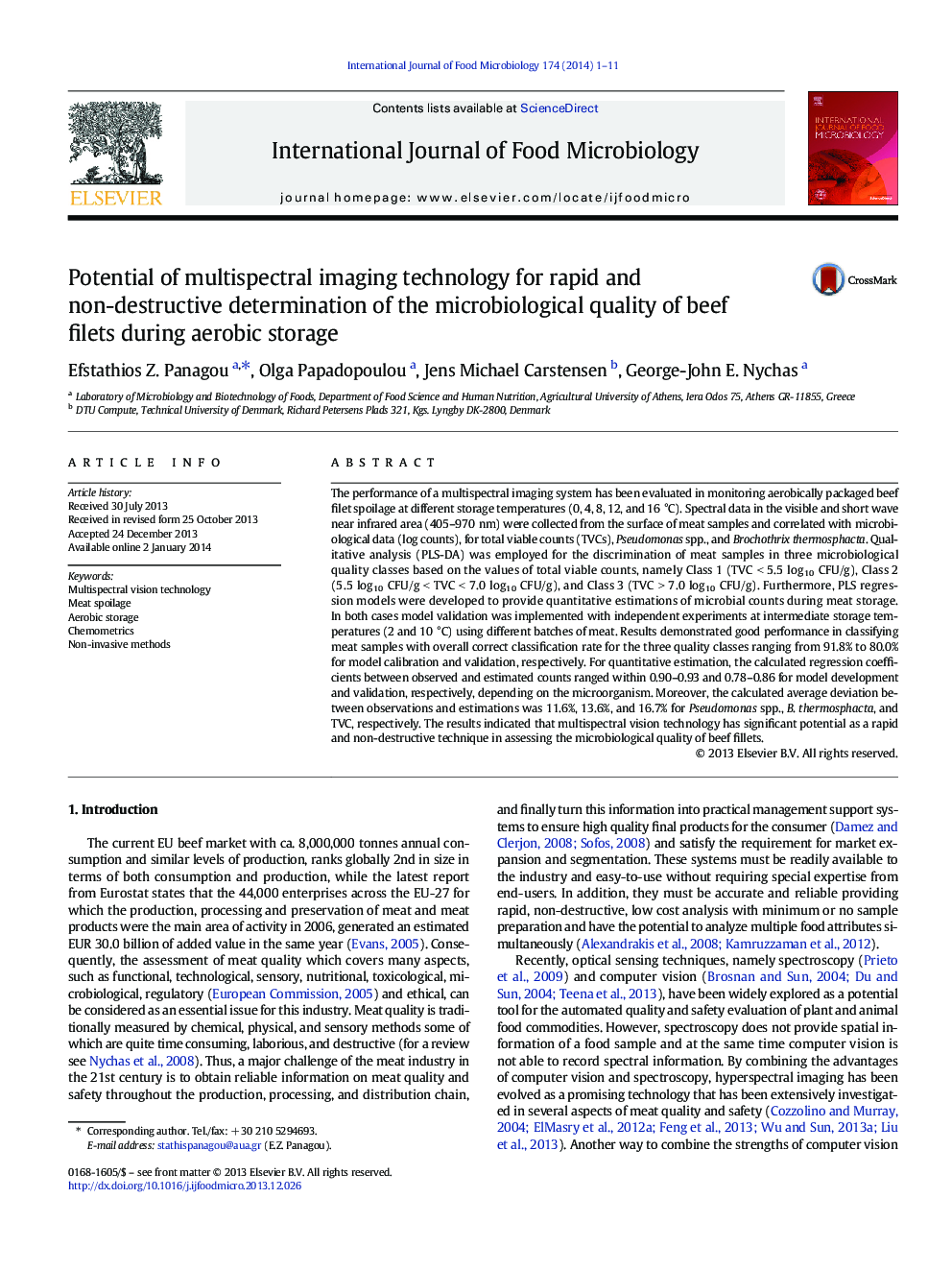| کد مقاله | کد نشریه | سال انتشار | مقاله انگلیسی | نسخه تمام متن |
|---|---|---|---|---|
| 4366946 | 1616608 | 2014 | 11 صفحه PDF | دانلود رایگان |
• Multispectral image analysis was used to discriminate the quality of beef filets.
• Meat samples were divided in 3 quality classes based on the load of total viable counts.
• Spectral data were also used to estimate the load of Pseudomonas and B. thermosphacta.
• Good correlation could be obtained between spectral data and microbial counts.
• Multispectral image analysis can be effective in estimating the quality class of beef.
The performance of a multispectral imaging system has been evaluated in monitoring aerobically packaged beef filet spoilage at different storage temperatures (0, 4, 8, 12, and 16 °C). Spectral data in the visible and short wave near infrared area (405–970 nm) were collected from the surface of meat samples and correlated with microbiological data (log counts), for total viable counts (TVCs), Pseudomonas spp., and Brochothrix thermosphacta. Qualitative analysis (PLS-DA) was employed for the discrimination of meat samples in three microbiological quality classes based on the values of total viable counts, namely Class 1 (TVC < 5.5 log10 CFU/g), Class 2 (5.5 log10 CFU/g < TVC < 7.0 log10 CFU/g), and Class 3 (TVC > 7.0 log10 CFU/g). Furthermore, PLS regression models were developed to provide quantitative estimations of microbial counts during meat storage. In both cases model validation was implemented with independent experiments at intermediate storage temperatures (2 and 10 °C) using different batches of meat. Results demonstrated good performance in classifying meat samples with overall correct classification rate for the three quality classes ranging from 91.8% to 80.0% for model calibration and validation, respectively. For quantitative estimation, the calculated regression coefficients between observed and estimated counts ranged within 0.90–0.93 and 0.78–0.86 for model development and validation, respectively, depending on the microorganism. Moreover, the calculated average deviation between observations and estimations was 11.6%, 13.6%, and 16.7% for Pseudomonas spp., B. thermosphacta, and TVC, respectively. The results indicated that multispectral vision technology has significant potential as a rapid and non-destructive technique in assessing the microbiological quality of beef fillets.
Journal: International Journal of Food Microbiology - Volume 174, 17 March 2014, Pages 1–11
